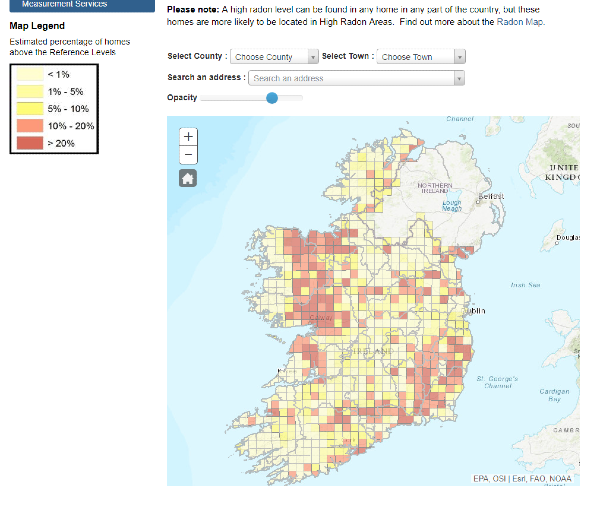Living in an area with a high level of radon exposure increases the risk of lung cancer diagnosis, according to new ESRI research.
We all have this cancer-causing radioactive gas radon in our homes to some degree, however, it can vary from home to home, depending on which part of the country you live in.
This research, commissioned by the Environmental Protection Agency, examined data on a large number of people aged 50+ in Ireland to see whether living in areas with greater risk of radon exposure means you are at greater risk of a lung cancer diagnosis.
Radon, a naturally occurring gas, has no colour, taste or smell so some may not be aware of the level of it in their homes A high radon level can be found in any home in any part of the country, but certain homes are more likely to be located in High Radon Areas, which you can see on the Radon Map.
Researchers took into account other risk factors such as smoking and age when testing randon exposure levels. They linked data for over 5,000 individuals from The Irish Longitudinal Study on Ageing (TILDA) combined with data on radon exposure risk provided by the Environmental Protection Agency.
It is the first study to use such a large number of people to collegiate the data and also the first to take account of such a wide range of information about individuals. Last year, a study found that randon exposure is linked to 250 cases of lung cancer in Ireland every year, so the new findings are a more definitive link between the exposure to the gas and developing lung cancer.
"Lung cancer diagnosis is most prevalent in areas where 10 to 20 per cent of houses are above the national reference point of 200 becquerel per cubic metre," the study revealed.
"People in these areas are three times more likely to have a lung cancer diagnosis than people in areas where less than 1 per cent of houses are above the reference point," according to the findings.
They advise that policymakers should consider a range of measures to reduce risk to randon exposure, including public awareness campaigns about the importance of reducing radon exposure in homes; introducing required testing of homes prior to rental or sale; and financial incentives to radon-proof buildings.
“It is already known that 250 lung cancer deaths in Ireland every year can be attributed to radon exposure. This research emphasises that people should not be complacent about the risk of radon exposure. Measures should be taken to ensure that people in areas of high radon exposure are aware of the risk and know how to mitigate it,” advised Anne Nolan, of the ESRI.











